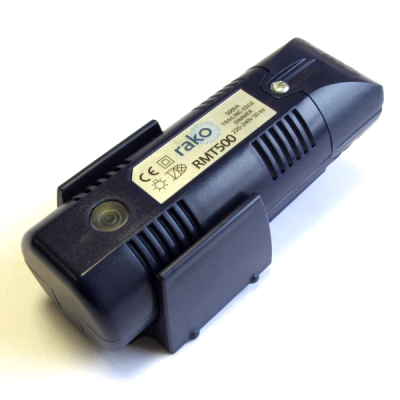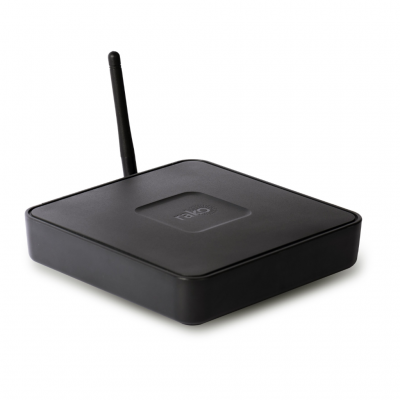With the increasing concern for environmental sustainability and the growing need to conserve resources, energy efficiency has become a focal point of interest for many people. One aspect of this is lighting, particularly residential lighting design. In the United Kingdom, energy-efficient lighting has gained considerable attention in recent years. This article will explore the world of energy-efficient residential lighting design in the UK, focusing on the importance of this concept, the basics of energy-efficient lighting, practical tips, and future trends.
The Basics of Energy Efficient Lighting
Energy-efficient lighting primarily depends on the type of bulb used. There are three types of energy-efficient light bulbs:
-
Compact Fluorescent Lamps (CFLs): These bulbs use a fraction of the energy required by traditional incandescent bulbs while producing the same amount of light. CFLs can save up to 80% of energy compared to incandescent bulbs.
-
Light Emitting Diodes (LEDs): LEDs are the most efficient and long-lasting type of energy-efficient light bulb. They use up to 90% less energy than incandescent bulbs, and they can last up to 25 years.
-
Halogen Incandescent Bulbs: These bulbs are similar to standard incandescent bulbs but use a halogen gas to increase energy efficiency. They are not as efficient as CFLs or LEDs, saving only about 20% more energy compared to regular incandescent bulbs.
When looking for energy-efficient light bulbs, it is essential to check for the Energy Saving Trust (EST) Recommended certification or the European Union's Energy Label. Both of these indicate that the bulb meets specific energy efficiency requirements.
The Role of Lighting Design in Energy Efficiency
The lighting design of a residential space plays a significant role in determining its energy efficiency. Proper lighting design not only ensures that the space is well-lit but also optimises the use of energy, preventing unnecessary waste. Consequently, the right lighting design can significantly reduce both electricity consumption and carbon emissions over time.
When designing residential lighting for energy efficiency, it's crucial to consider several factors:
-
Natural Light: Maximise the use of natural light in a residential space by considering the orientation, window placement, and layout of the space.
-
Task and Ambient Lighting: Strike a balance between task and ambient lighting to achieve the desired atmosphere while reducing energy consumption.
-
Placement and Control: Place lights strategically and use dimmers and timers to reduce energy usage by adjusting the brightness and duration of use.
-
Size and Type of Light Bulbs: Use appropriately sized light bulbs for the space and opt for energy-efficient options mentioned earlier in the article.
Guide to Energy Efficient Lighting in Residential Spaces
The Energy Saving Trust is an organization in the UK that aims to provide guidance on how to save energy in households. They offer tips and recommendations regarding energy-efficient residential lighting design. Some tips include:
- Replace traditional incandescent bulbs with energy-efficient alternatives.
- Use energy-saving bulbs in high-usage areas.
- Install lighting controls, such as dimmers, motion sensors, and timers.
- Choose lower wattage bulbs or LED lights for decorative and ambient lighting.
Tips for Energy-Efficient Lighting Design
- Use layering of light through a combination of ambient, task, and accent lighting to achieve the desired atmosphere while minimising energy consumption.
- Choose light fixtures with Energy Star certification for better energy efficiency.
- Optimise the use of natural light by incorporating daylighting strategies in the design.
- Regularly clean and maintain bulbs and fixtures to improve their efficiency and lifespan.
The Future of Energy Efficient Lighting Design
LED technology has seen significant advancements over the past decade, making it an increasingly essential player in energy-efficient lighting design. As LED technology matures and becomes more efficient, its application in residential lighting design will continue to grow. LEDs are becoming cheaper, more adaptable, and more versatile, making them a popular choice for homeowners across the UK.
The Lightbulb Company, based in the UK, specialises in offering energy-efficient lighting solutions to new businesses. They work with clients to design tailored lighting systems that maximise energy efficiency while maintaining aesthetics and functionality. Their approach emphasises the use of LED lighting technology and smart controls to achieve the best results for their clients.
Practical Tips for Energy-Efficient Lighting
Lights.co.uk is an online supplier of lighting products in the UK. They provide a range of tips for homeowners to save energy through efficient residential lighting design:
- Switch off lights when not in use.
- Choose the right type of light bulb for each area of the house.
- Use efficient outdoor lighting options like solar-powered lights.
- Utilise dimmer switches to control the amount of light and energy used.
A Guide to Energy-Saving LED Bulbs
LED bulbs are an excellent option for reducing energy consumption in residential spaces. Here are a few tips for choosing the right energy-saving LED bulbs:
- Check the bulb's brightness (measured in lumens).
- Choose the right colour temperature (measured in Kelvin) to achieve the desired atmosphere.
- Consider the bulb's lifespan (measured in hours).
- Review the bulb's compatibility with existing light fixtures and dimmer switches.
The Impact of Lighting on the Environment
The carbon footprint of lighting is a measure of the greenhouse gas emissions resulting from electricity generation to power lights. Switching to energy-efficient lighting options, such as LED bulbs, can significantly reduce carbon emissions and decrease the overall carbon footprint of your home.
Energy-efficient lighting reduces the amount of electricity needed to light a residential space, thus reducing the demand on power plants. This, in turn, decreases greenhouse gas emissions, ultimately contributing to carbon reduction efforts and promoting a cleaner environment.
In conclusion, energy-efficient residential lighting design plays a crucial role in achieving a sustainable lifestyle in the UK. By understanding the basics, practical tips, and future trends, homeowners can make informed choices that will not only save them money but also contribute to a cleaner and greener environment. As technology continues to evolve and develop, energy-efficient lighting will remain a cornerstone of sustainable living, making it imperative for individuals to stay informed and make smart decisions for their homes.

Utilizing Lighting Controls for Mood, Efficiency, and Convenience
Lighting controls, including dimmers, timers, motion sensors, and app-based systems, offer numerous benefits for homeowners in terms of mood creation, energy efficiency, and convenience. By understanding the features and applications of these controls, homeowners can optimize their energy-efficient lighting schemes while enjoying a personalized and comfortable living space.
Mood Lighting with Light Dimming
Dimmers enable homeowners to adjust the brightness of their light fixtures, allowing them to create the perfect atmosphere for various situations. For instance, dimming the lights can create a romantic ambiance for a dinner or a calm environment for relaxation and reading. Conversely, increasing the brightness can create an energizing atmosphere for performing tasks or socializing with friends. By having direct control over the light intensity, homeowners can shape the mood of their space effortlessly.
Lighting controls that incorporate color-changing LED bulbs can further enhance mood creation. With the ability to adjust both the brightness and color temperature, homeowners gain even more control over creating specific atmospheres. For example, switching to warmer colors can provide a cozy atmosphere, while cooler colors can evoke a more modern and minimalist feel.
Lighting Automation for Energy Efficiency
Motion sensors and timers are excellent additions to an energy-efficient residential lighting design. Motion sensors detect movement within a space and automatically turn the lights on and off accordingly, eliminating the need to manually control the fixtures. This not only saves energy by ensuring that lights are utilized only when needed but also adds an element of convenience and security for homeowners.
Timers can be programmed to turn lights on and off at specific intervals or during set periods of the day. This feature ensures that lights are not left on for longer than necessary, potentially resulting in substantial energy savings.
App-Controlled Lighting Systems for Convenience and Customization
App-controlled lighting systems offer homeowners the ability to control their lighting using a smartphone, tablet, or other internet-connected devices. These systems provide a new level of customization, allowing users to group lighting fixtures together, set scenes, and schedule lights to turn on and off at predetermined times.
One popular feature of app-controlled lighting systems is the ability to control lights remotely. Homeowners can turn lights on and off, adjust brightness, or even change the color temperature, all from the comfort of their smartphone. This control adds an additional level of convenience and flexibility, especially for those who may have limited mobility or are away from home.
In conclusion, incorporating lighting controls in energy-efficient residential lighting designs not only enhances the aesthetic appeal and mood of a living space but also ensures that energy is used efficiently and effectively. By utilizing dimmers, timers, sensors, and app-controlled systems, homeowners can achieve a comfortable and personalized space while contributing positively to the environment and overall energy conservation.

FAQs
What types of energy-efficient light bulbs are available for residential use?
Compact Fluorescent Lamps (CFLs), Light Emitting Diodes (LEDs), and Halogen incandescent bulbs are the three main types of energy-efficient light bulbs available for residential use. LEDs are the most efficient and long-lasting option, while CFLs offer a balance between efficiency and affordability. Halogen incandescent bulbs provide modest energy savings compared to regular incandescent bulbs, but they may not be the best option for long-term energy efficiency.
How can I identify an energy-efficient light bulb when shopping?
When shopping for energy-efficient light bulbs, look for the Energy Saving Trust (EST) Recommended certification or the European Union’s Energy Label. Bulbs with these certifications meet specific energy efficiency requirements, ensuring that they will help to reduce energy consumption in your home.
How does proper lighting design contribute to energy efficiency in residential spaces?
A well-designed lighting plan allows you to find a balance between providing adequate illumination for the space while minimizing energy consumption. Key elements of this design include maximizing the use of natural light, selecting energy-efficient light bulbs, strategically placing and controlling lights, and considering task and ambient lighting requirements. By optimizing these factors, homeowners can notably reduce their energy usage, resulting in lower electricity bills and a smaller carbon footprint.
What are some practical tips for implementing energy-efficient lighting in my home?
Some practical tips for implementing energy-efficient lighting in your home include choosing the right type of bulbs (LEDs, for example), using dimmer switches or timers to control light usage, adopting lower wattage bulbs or LED lights for decorative lighting, and placing lights strategically to maximize their effectiveness. Additionally, it is essential to regularly clean and maintain bulbs and fixtures to ensure their optimum performance and lifespan.
How does the use of lighting controls, such as dimmers and timers, contribute to energy-efficient residential lighting?
Lighting controls, such as dimmers, timers, motion sensors, and app-based systems, offer several benefits for energy-efficient residential lighting. Dimmers allow you to adjust the brightness of lights, ensuring that you’re using only the amount of light required. Timers and motion sensors can be programmed to operate only during specific times or when movement is detected, reducing energy consumption and costs. App-based systems offer customization and remote control options to help manage your home’s lighting efficiently and conveniently. Overall, these controls contribute significantly to modern energy-efficient lighting solutions for residential spaces.

Rako Lighting Controls Systems

Rako Keypads

Rako Dimmers

